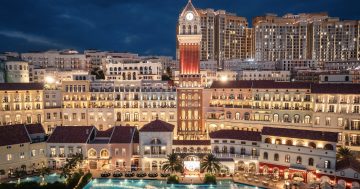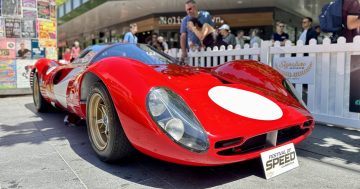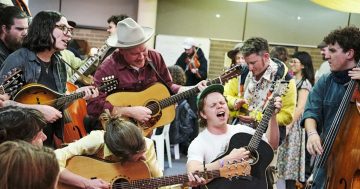By John Rozentals.
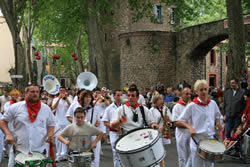
Céret’s cherry festival … bands play all day.
Sometimes when you travel you can be dead-set lucky – to be in just the right place at the right time.
And so it turned out when I visited Céret, a largish French town not far from the Mediterranean and very, very close to the Spanish border and hence the Pyrénées.
That whole corner of France is more Spanish then French,
The red- and-yellow Catalan stripes take precedence over both the Tricolore and the circle of stars representing the EU; bull-fighting is des rigueur; and most restaurants feature crème caramel on their lists of desserts.
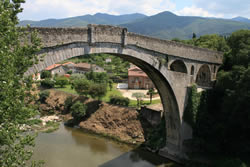
Pont de Diable … the world’s longest single-span bridge when it was built.
Locals tend to just shrug: “Catalonia’s just round the corner; Paris is some 800 kilometres up the road.”
After spending the first part of a late-May morning being amused by a delivery van stuck in an alley, I realised that Céret happens to be the cherry capital of France and that the driver was trying to get through with a delivery to the town’s annual cherry festival, Fête de la Cerise.
Yes, that’s right. I really was at Céret bright and early for the town’s one day of the year, or rather perhaps one if its two days of the year — the other being reserved for a running of the bulls on the weekend closest to Bastille Day (July 14).
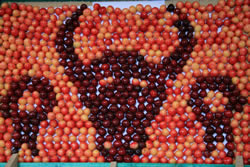
Céret’s two great loves … cherries and bulls.
Anyway, nature has conspired for Céret to grow France’s top cherries and the town is apparently mad over its cherries most of the time, but on the day of the festival it goes quite ballistic.
Bands, generally led by a particularly strong brass section, play and march for the whole day, residents decorate stalls and themselves, restaurants feature special cherry-inspired menus, and there are very seriously-taken competitions devoted to spitting cherry pips. Style doesn’t matter; it seems to be length that counts.
Despite a misspent youth making pocket money for Christmas picking the things I still rather like cherries, which turns out to be a very good thing.
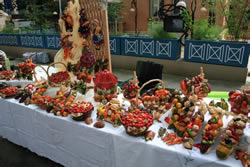
The fruits of Céret … taking pride of place at the town’s cherry festival.
And Céret turns out to have considerably more going for it than simply cherry pips and bull dust.
It’s home to the Pont de Diable (Devil’s Bridge), which spans 45.45 metres in a single stone arch high over the Tech River.
When it was first built in the 1300s its arch was the longest in the world, a record it held for only a few years before being outdone by the Italians at Verona.
It certainly remains impressive.
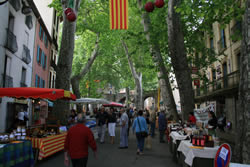
All set up for the day … Céret is ready for its annual cerry festival.
One of the town’s most famous residents was the artist Pablo Picasso and much of his work can be seen in its Musée d’Art Moderne, including his famous bull-fighting bowls series.
Don’t leave town without a squiz.
But, most importantly, don’t leave town with eating your fill of its most famous natural product. No bull crap.
Images: Sandra Burn White




